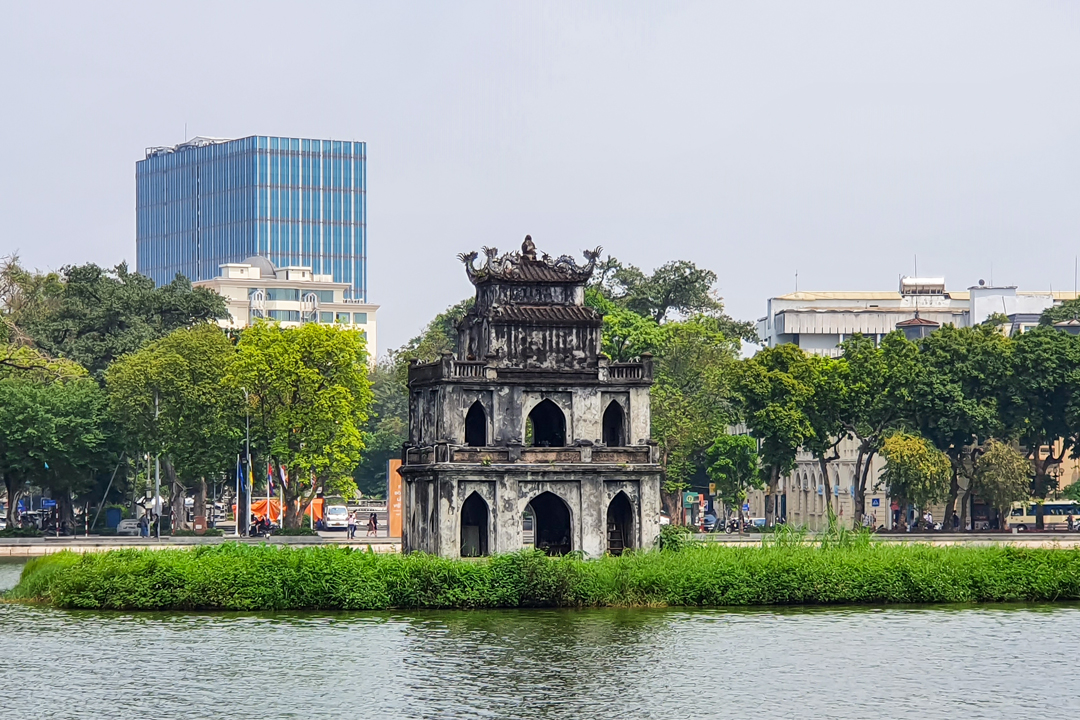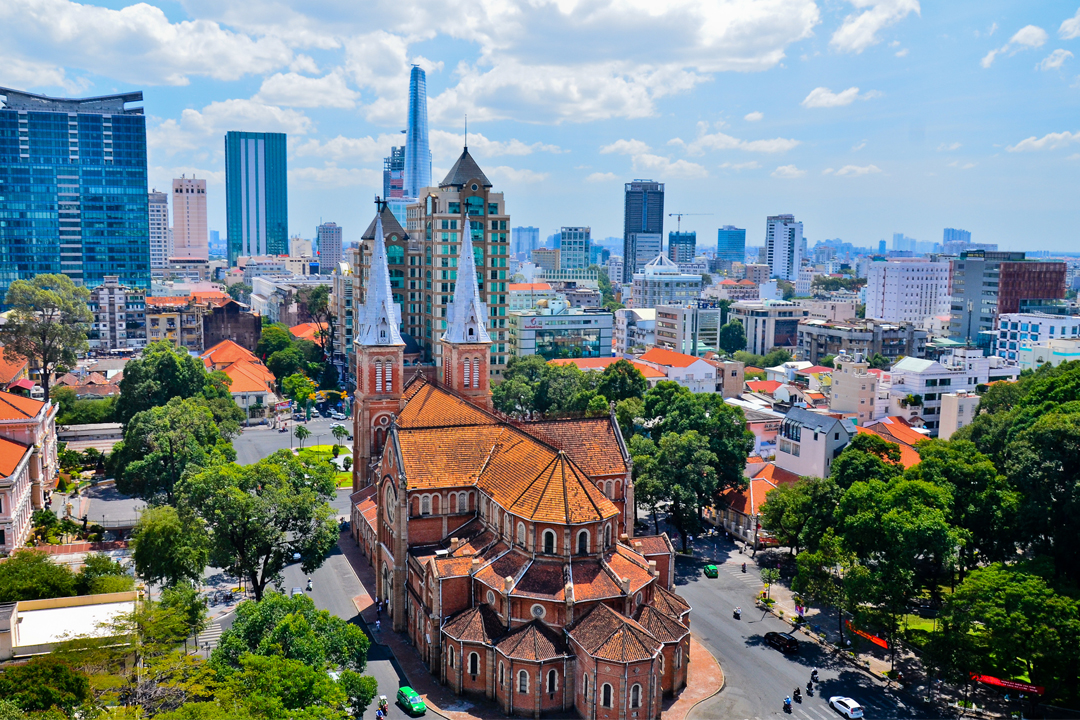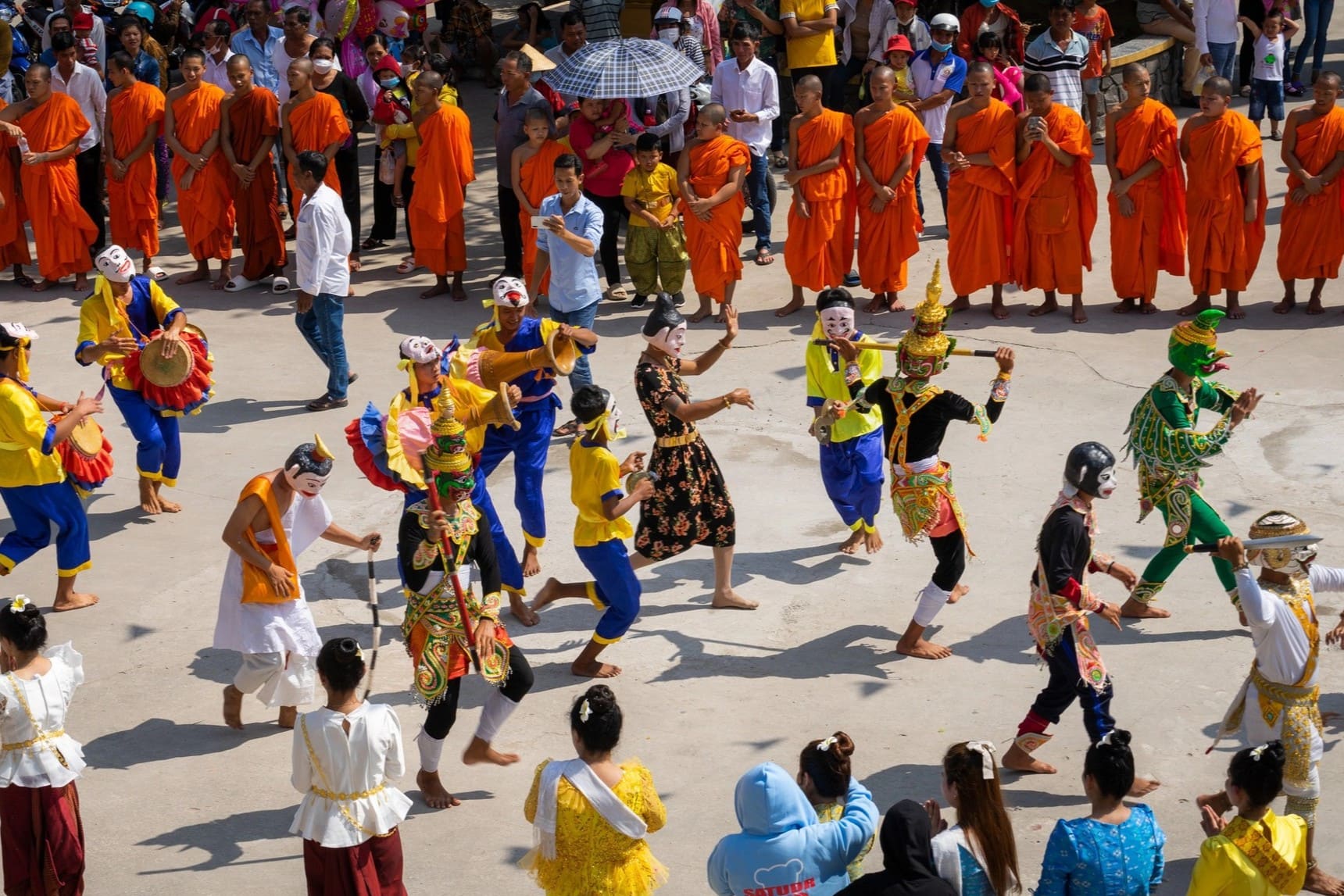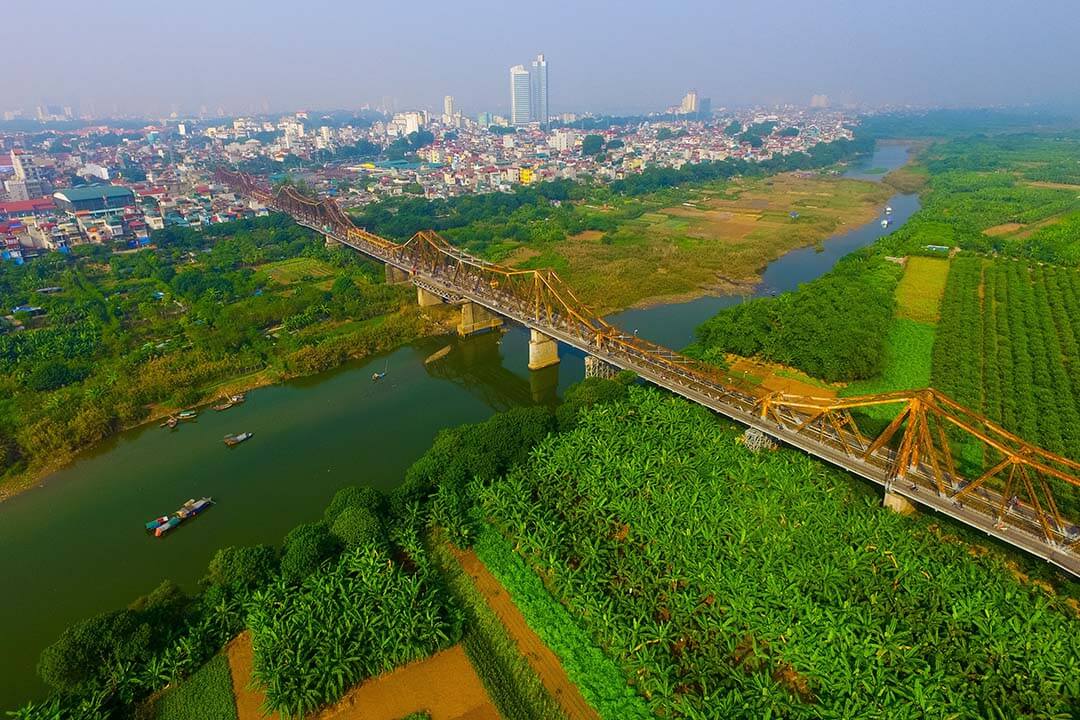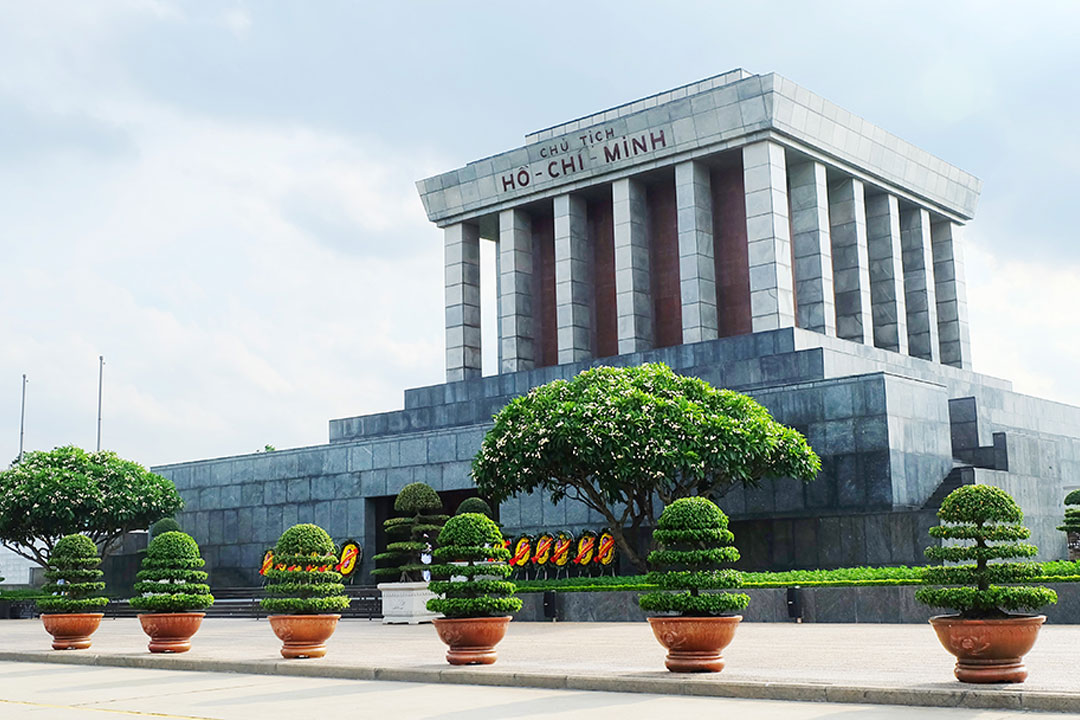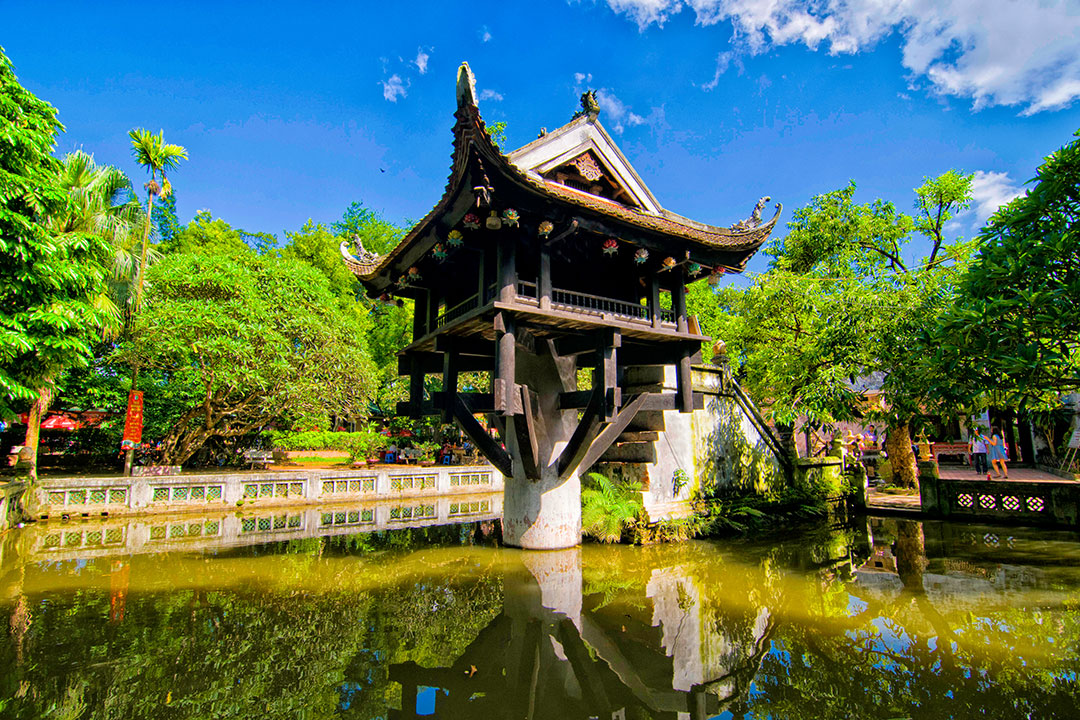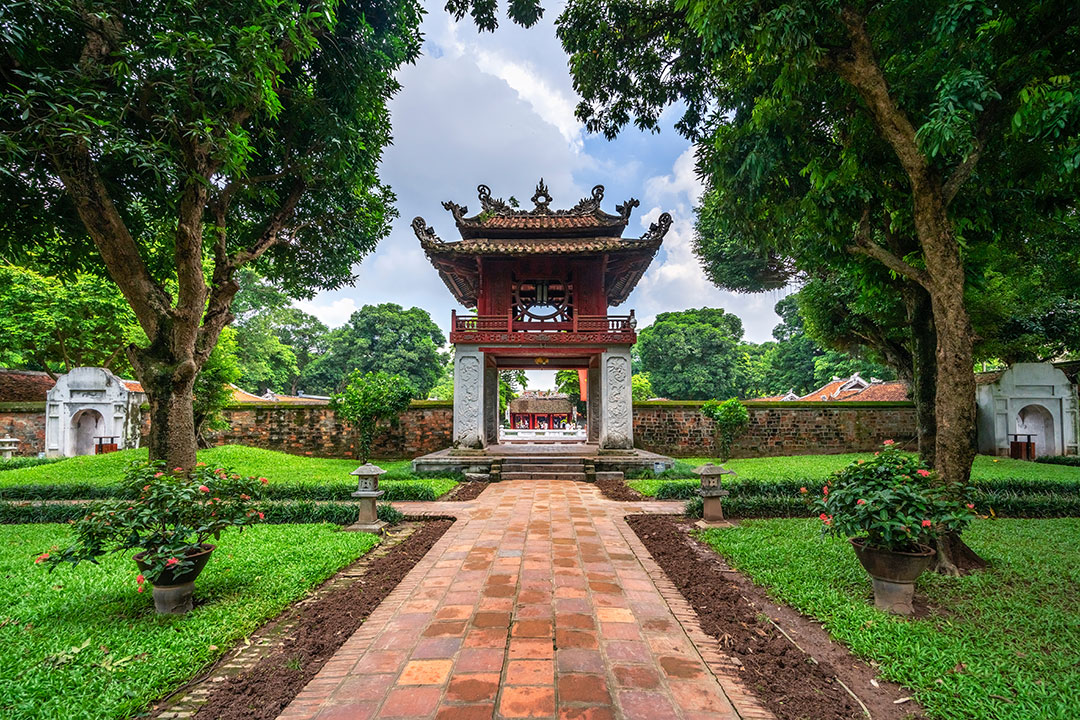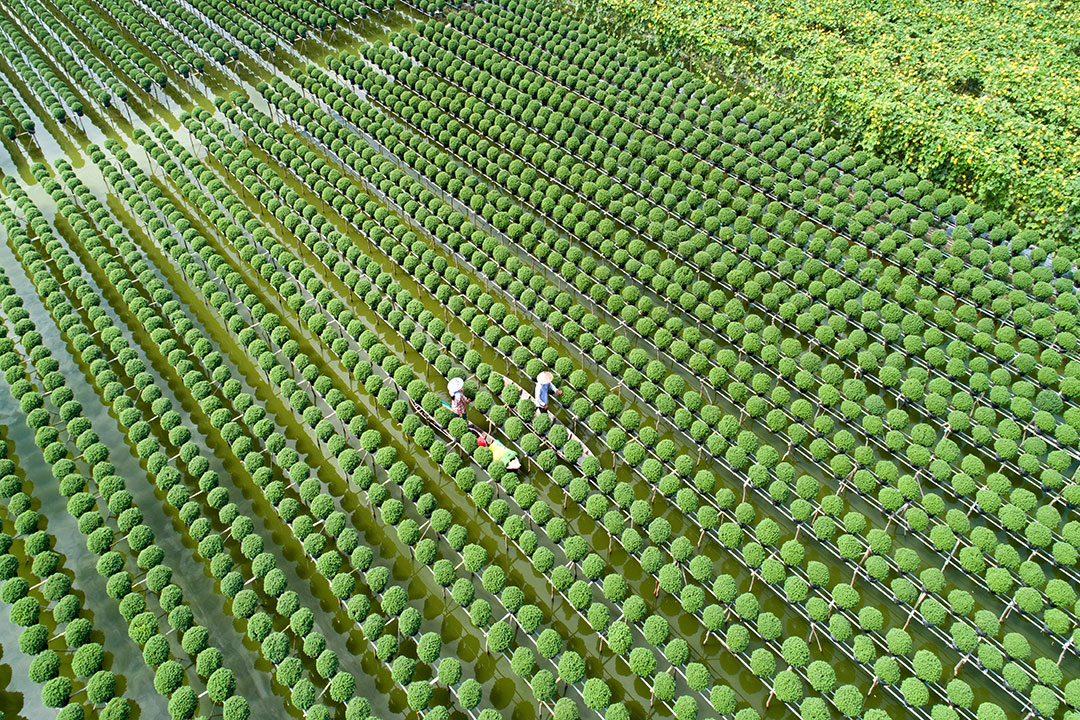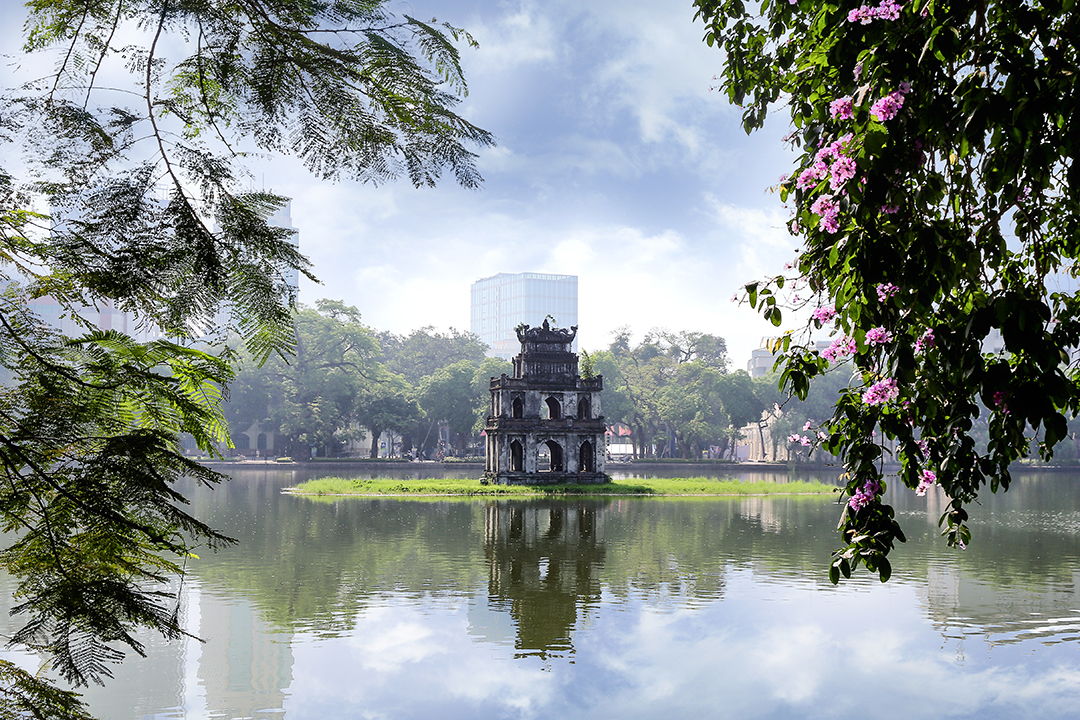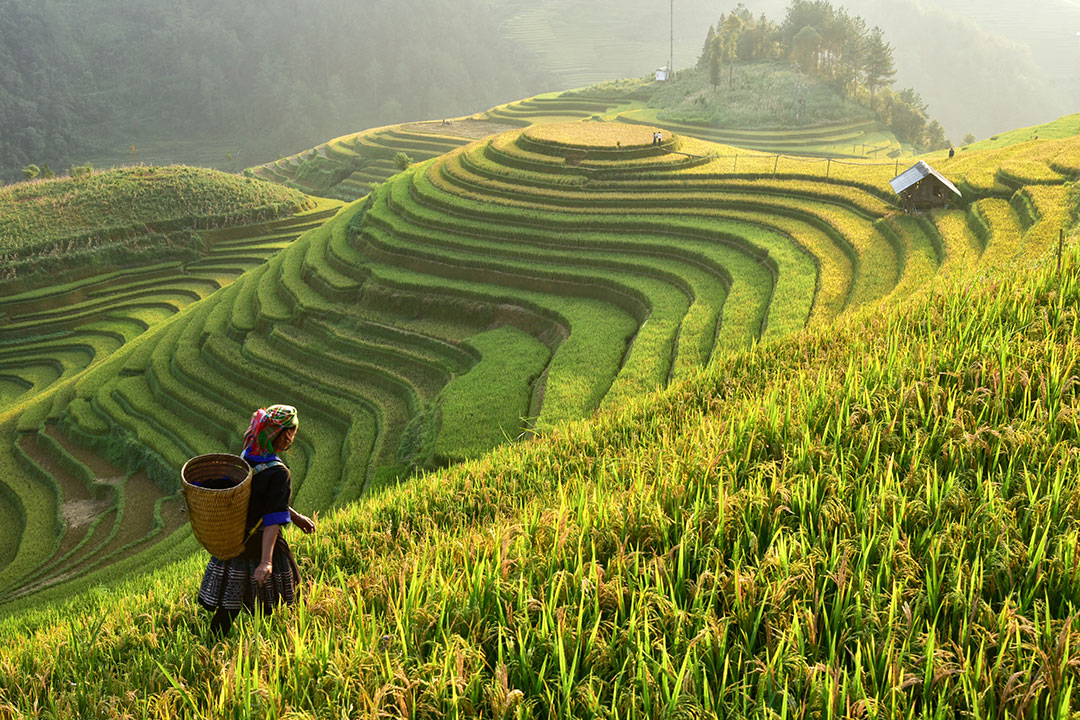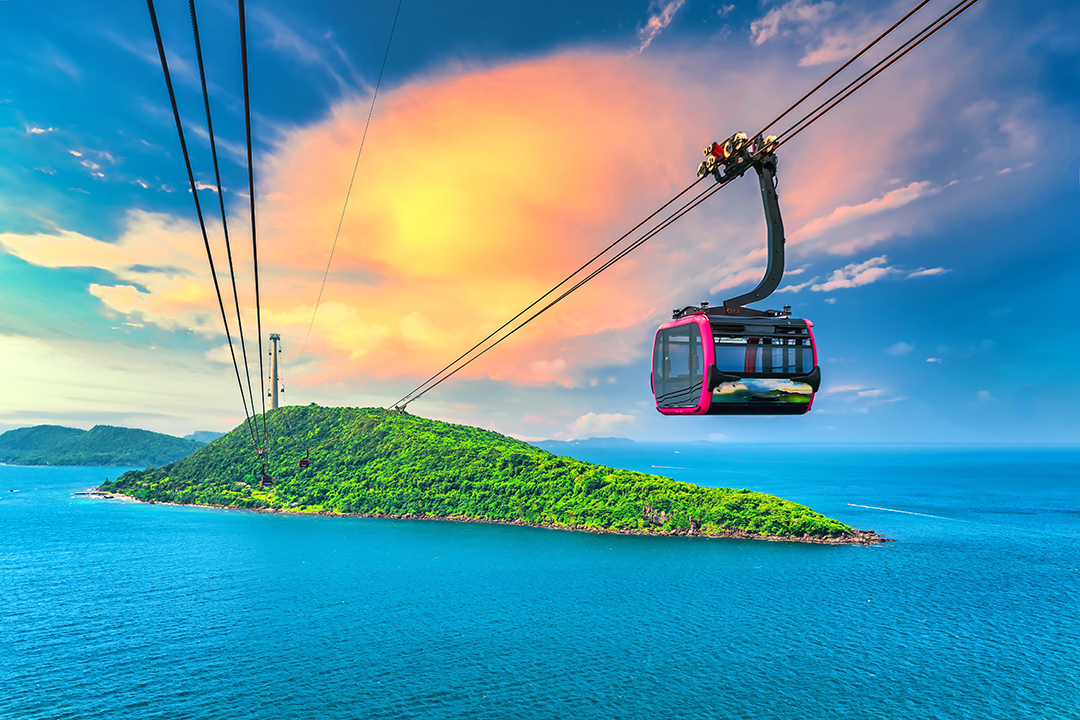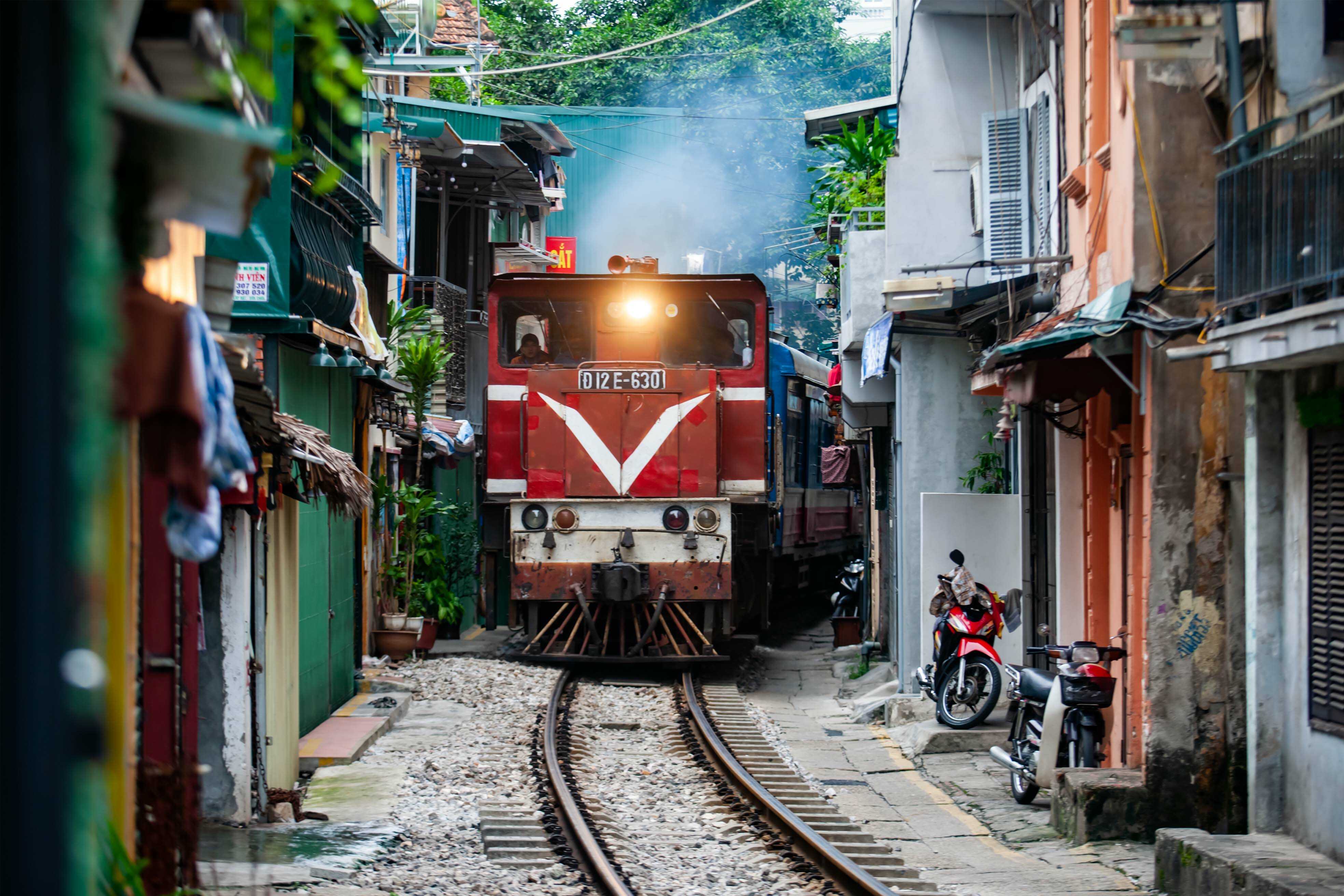Long Bien Bridge: History, Architecture, Things To Do & Travel Guide
Long Bien Bridge is a historic cantilever steel bridge that spans the Red River in Hanoi, Vietnam. It connects two districts of the city: Hoan Kiem District on the west side and Long Bien District on the east side. The bridge is located about one kilometer east of Hanoi's city center, near the Old Quarter and Hoan Kiem Lake. This article by GTrip will delve into the cultural significance of Long Bien Bridge, unraveling layers of historical narratives while providing practical insights for your visit. If you're a history lover or exploring hidden gems in Southeast Asia, learning about the Long Bien Bridge can enhance your visit to Hanoi.
History of Long Bien Bridge
Long Bien Bridge, originally named Paul Doumer Bridge, was constructed between 1899 and 1902 and officially inaugurated on February 28, 1902. Designed by French engineering firm Dayde & Pille, the bridge cost approximately 6.2 million French francs and was completed in 45 months, ahead of the planned 60-month schedule.
As the first steel bridge in Hanoi and one of the first in Vietnam, Long Bien Bridge was one of the longest bridges in Asia at its inauguration, second only to the Brooklyn Bridge. It symbolized French colonial technological advancement while later becoming a strategic target during the Vietnam War, surviving 14 bombing attacks. The bridge witnessed Vietnam's 1945 Declaration of Independence and the French withdrawal in October 1954.
Over 3,000 Vietnamese workers built Long Bien Bridge using high-quality imported steel and cutting-edge construction technology. The meticulous craftsmanship is evident in the bridge's rivet details and innovative cantilever design, showcasing both French engineering expertise and Vietnamese workmanship.
During the Vietnam War, the bridge was repeatedly bombed, especially in 1967 and 1972, yet never destroyed. Vietnamese engineers rapidly repaired it to maintain vital transportation links. After the war, it was restored and adapted from rail use to support various traffic, evolving from colonial infrastructure to national heritage.
Today, Long Bien Bridge serves as both a functional transportation link and a living museum of Vietnamese history. It has transformed from a symbol of colonial power to a beloved Vietnamese cultural icon, featured in literature, art, and photography. The bridge still carries trains, motorcycles, bicycles, and pedestrians daily, symbolizing Vietnam's resilience through colonial rule, war, and modernization.
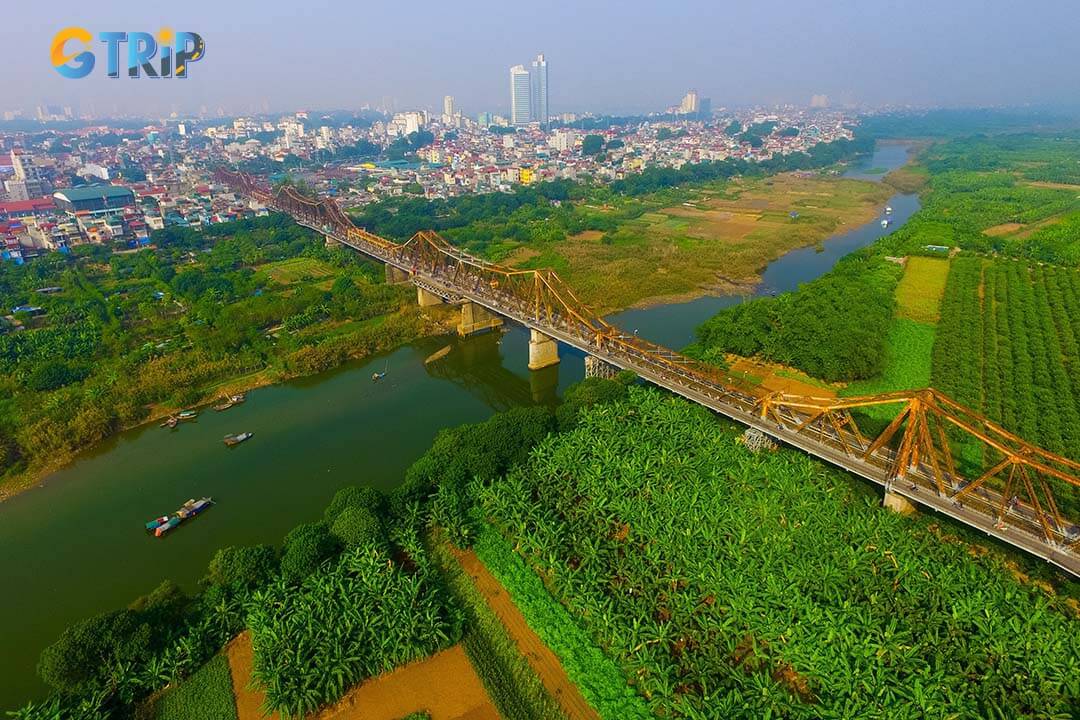
Long Bien Bridge, once a symbol of French colonial power, now stands as a resilient icon of Vietnamese history, linking past and present through over a century
Architecture of Long Bien Bridge
Long Bien Bridge spans an impressive 2,290 meters across the Red River, with an additional 896 meters of stone roads leading to its western approach. At just 4.75 meters wide, this historic structure showcases remarkable engineering for its era.
The bridge's distinctive architecture combines practical design with visual impact. Built with a steel framework and cast iron elements, it features a cantilever design supported by 19-20 tall pillars driven into the riverbed. These pillars support 19-20 steel spans that create the bridge's characteristic profile against Hanoi's skyline. The elaborate lattice steelwork creates a dragon-like silhouette when viewed from a distance, a fitting coincidence for this Vietnamese landmark.
Today's traffic arrangement reflects both historical constraints and modern needs. Of the 4.75-meter width, 2.6 meters accommodate cars, motorbikes, and motor vehicles, while the remaining 0.4 meters on each side serve pedestrians. The central portion houses the railway track, effectively separating the two directions of traffic.
This efficient use of limited space allows for simultaneous rail, vehicular, and pedestrian traffic, creating a multi-modal transportation experience rare among historic bridges. Despite numerous challenges throughout its history, including wartime damage, the bridge's enduring structure testifies to the quality of its original engineering. Long Bien Bridge continues to serve as both a vital transportation link and an architectural symbol of Hanoi's resilience and heritage.
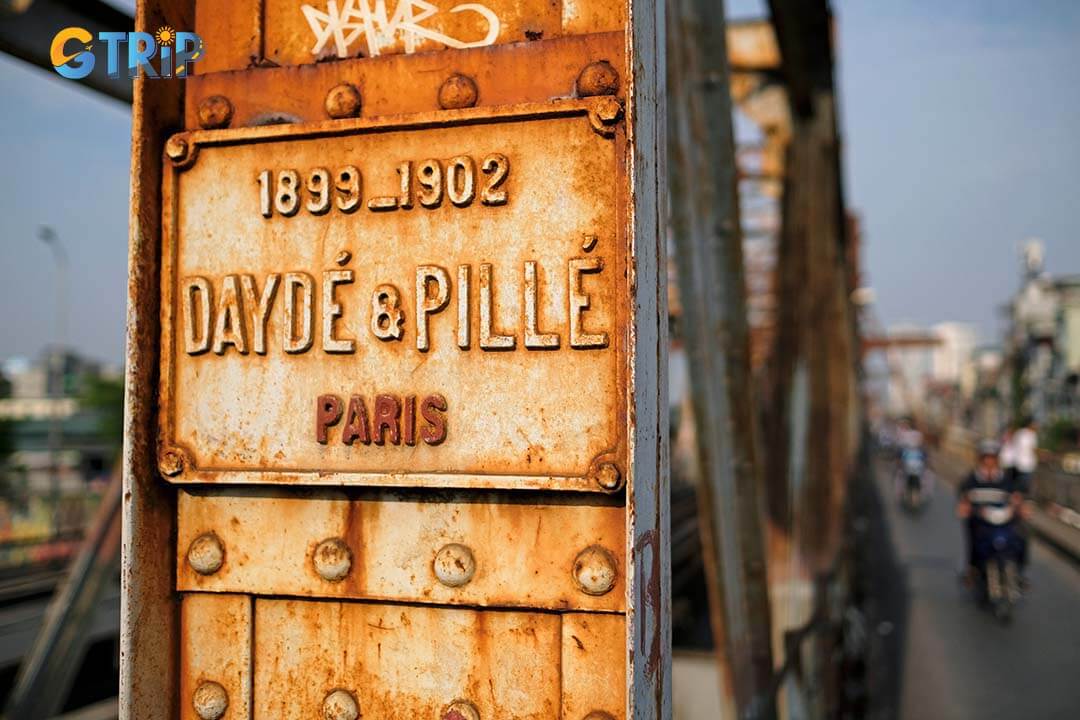
Spanning 2,290 meters, Long Bien Bridge’s narrow steel frame supports trains, vehicles, and pedestrians, forming a dragon-like silhouette over the Red River
Things to do at Long Bien Bridge
Long Bien Bridge offers visitors a blend of history, culture, and stunning views. Beyond being a crossing, it’s a destination for photographers, history enthusiasts, foodies, and adventurers, with activities like sunrise views and local street food.
Register and capture a photo on the bridge
Long Bien Bridge has become one of Hanoi's most Instagram-worthy locations, offering countless creative photography opportunities against its historic backdrop. The bridge's distinctive red-brown iron structure, combined with views of the Red River and Hanoi skyline, provides a perfect setting for memorable travel photographs.
Top photo spots include the main archway and pedestrian paths with clear river views. The most coveted shots often feature the railway tracks stretching into the distance, though visitors should exercise extreme caution and never pose on active tracks. Trains cross the bridge several times daily, and their schedules can be unpredictable.
For the most striking images, consider these photography tips:
- Early morning: Capture the bridge with fewer people and beautiful golden light
- Composition: Use the repeating patterns of the bridge's structure to create depth in your images
- Perspective shots: Stand at one end looking down the length of the bridge for dramatic vanishing point photographs
- Detail captures: Focus on textural elements like the weathered ironwork or wooden planks that tell the bridge's age story
- Contrast shots: Frame modern elements (like yourself or contemporary clothing) against the historic structure
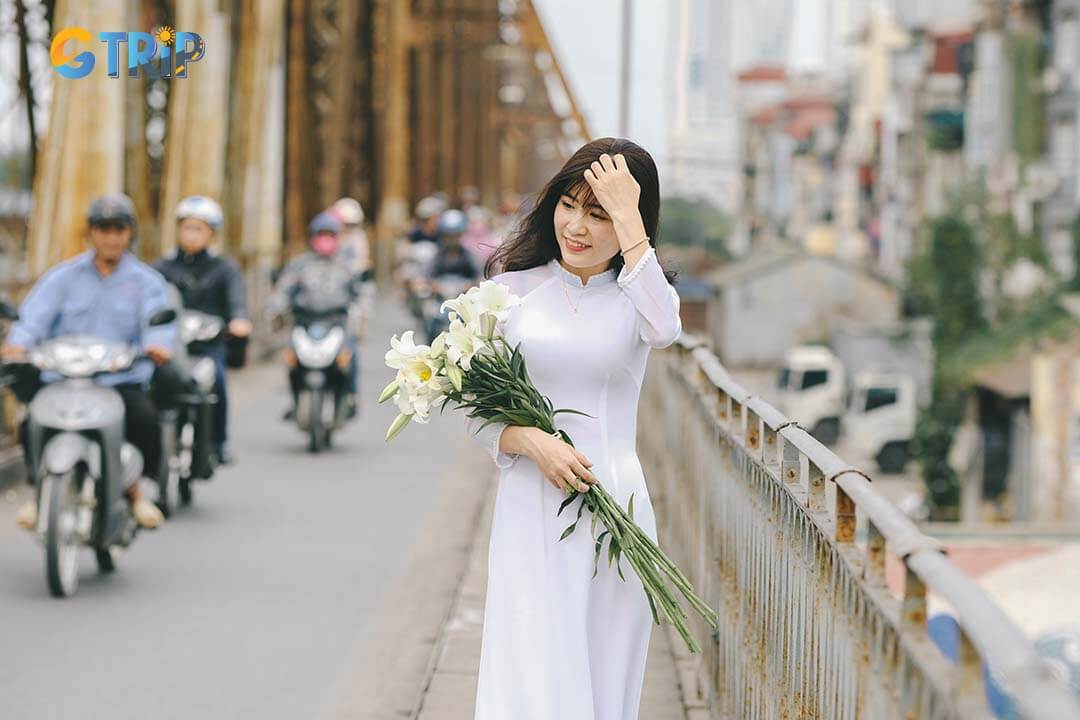
Long Bien Bridge is a top photo spot in Hanoi, known for its rust-hued steel, sweeping river views, and iconic railway tracks, perfect for dramatic, historic backdrops
Pedestrian and bicycle access on the bridge
Long Bien Bridge provides one of the most immersive experiences for travelers wanting to feel the pulse of Hanoi's daily life. The pedestrian walkways provide a chance to leisurely cross the historic bridge while enjoying panoramic views of the Red River.
Walking across the 1.7-kilometer span gives you time to appreciate the bridge's century-old iron framework while observing the vibrant life that unfolds around it. The journey takes approximately 30-40 minutes one way, allowing plenty of time for photos and contemplation. For safety, stick to the pedestrian pathways, as the central section is reserved for motorbikes and the functioning railway.
Cycling across Long Bien offers an even more exhilarating experience. Many local tour companies offer bike rentals specifically for bridge crossing, typically costing between 50,000-100,000 VND (approximately $2-4) for several hours. The gentle incline makes it accessible to cyclists of all fitness levels, though be prepared for some bumpy sections where the original decking has weathered with age.
Best routes for walking and cycling:
- Standard crossing: Start at Long Bien station in the Old Quarter and cross to the other side
- Loop route: Cross the bridge, explore the banana plantations on the far side, and return via the Chuong Duong Bridge for varied perspectives
- Sunset cycle: Begin your journey about an hour before sunset to experience the changing light conditions, ending with nighttime views of the illuminated city
Catch the moment of dawn and dusk
Long Bien Bridge transforms into a photographer's paradise during the golden hours of sunrise and sunset. The light and shadow on the bridge's iron structure create dramatic scenes, making it a favorite for photographers and Instagram users.
Sunrise at Long Bien Bridge typically occurs between 5:30-6:30 AM, depending on the season, offering serene moments before the city fully awakens. The morning light casts a golden glow across the Red River, illuminating the patchwork of urban structures and agricultural plots that characterize Hanoi's riverbanks. Early morning visits also provide cooler temperatures, particularly welcome during summer months when daytime heat can be intense.
Sunset viewing, occurring around 5:30-6:30 PM, delivers equally stunning vistas with the bonus of watching the city lights begin to twinkle as darkness falls. The bridge itself becomes silhouetted against the colorful sky, creating iconic photographic opportunities that capture Hanoi's blend of historic charm and urban energy.
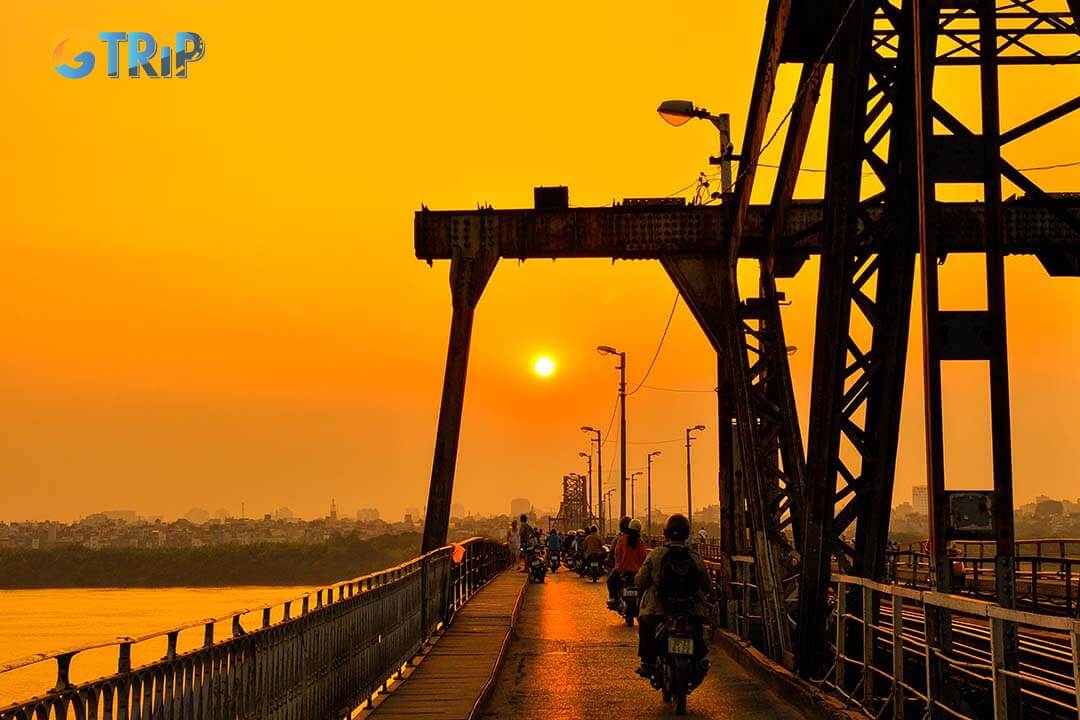
Long Bien Bridge glows during sunrise and sunset, offering stunning light, dramatic silhouettes, and peaceful views that make it a favorite for photographers
Savor local delights on Long Bien Bridge at night
As night falls, Long Bien Bridge becomes a vibrant food hub at night, with local vendors grilling traditional snacks loved by both locals and visitors. The smell of charcoal-grilled corn and slow-roasted sweet potatoes fills the air, enticing passersby to stop and enjoy these simple yet flavorful street foods. The corn, coated in scallion oil, and the tender, caramelized sweet potatoes are grilled using traditional techniques, offering an authentic taste.
Vendors typically operate from around 7:00 PM until late into the night, and the prices are refreshingly affordable, ranging from 10,000-15,000 VND ($0.40-0.65) per item. This makes it an accessible and delightful treat for anyone looking to immerse themselves in local flavors. The combination of the warm snacks and the picturesque setting of the bridge, with its twinkling lights and scenic views, offers an unforgettable moment for travelers.
Popular nighttime snacks include:
- Charcoal-grilled corn with scallion oil
- Slow-roasted sweet potatoes with a caramelized crust
- Banh mi (from select vendors)
- Vietnamese coffee (typically available from vendors near the bridge entrances)
- Seasonal fruits such as longan or lychee (especially in the summer months)
Visiting the Banana Island
When visiting Long Bien Bridge, you can’t miss the opportunity to explore Banana Island, a peaceful destination located right at the foot of the bridge. Banana Island (also known as Bai Giua) stands out with its pristine natural beauty and fresh air, offering a tranquil escape from the bustling heart of Hanoi. You can reach the island via a staircase midway across the bridge or from alley 76 on An Duong Street.
Once you set foot on the island, you’ll be drawn in by the lush banana groves, winding paths, and calm atmosphere, a stark contrast to the city’s bustle. It's an ideal spot for nature lovers and those looking to get away from the noise and bustle of urban life. You can enjoy the fresh air while walking or cycling around the island, visiting the banana orchards, or even participating in small farming activities hosted by local people.
In the evening, Banana Island becomes a perfect place to enjoy street food, it’s offering a unique culinary experience that’s deeply rooted in Hanoi’s local culture. With its peaceful vibe and Red River views, it’s a perfect spot to relax during your Hanoi visit. Banana Island is a natural attraction and a place to relax and reconnect with nature, providing unforgettable experiences as you explore Hanoi.

Banana Island offers a peaceful escape with lush greenery, quiet paths, and local charm just steps from Hanoi’s urban rush
Best times of the day to visit the Long Bien Bridge
Early morning offers a glimpse of authentic local life with farmers and vendors crossing the bridge. The soft light and morning mist create atmospheric views over the Red River, perfect for photography. Temperatures are cooler, crowds are thinner, and you'll see the city awakening from a unique vantage point. Trains typically pass around 6:00 AM and 9:00 AM.
Best for examining architectural details with clear visibility of the bridge structure and panoramic views of Hanoi. Most comfortable during winter (15-20°C from December to February), but summer visits can be challenging with temperatures above 35°C. Bring sun protection year-round, and additional water during warmer months.
The most photogenic time is with warm lighting and spectacular reflections on the Red River. Temperatures are pleasant, making it comfortable for walking. The bridge becomes busier with both photographers and evening commuters heading home. Expect the most dramatic photos as the sun sets behind Hanoi's skyline. A train typically crosses around 4:30 PM.
The pedestrian path closes at 7:30 PM, but the illuminated bridge can be viewed from nearby cafes and restaurants in the Long Bien District. During full moon nights in the dry season (November-April), the moonlight creates particularly beautiful views across the river.
How to get to the Long Bien Bridge?
Long Bien Bridge is about 3 km from Hanoi's Old Quarter and easily reached by various transport options, suiting both budget travelers and those seeking comfort.
By taxi or ride-hailing services
Taxis or ride-hailing apps offer a convenient, comfortable way to reach Long Bien Bridge, ideal for newcomers or those with luggage.
Several reliable options are available for direct transportation to the bridge:
- Traditional taxis: Companies like Mai Linh, Taxi Group, and Vinasun operate throughout Hanoi with metered fares
- Grab: The most popular ride-hailing app in Vietnam, offering various vehicle options from motorbikes to cars
- Be: A Vietnamese ride-hailing service competing with Grab, often with competitive pricing
When requesting a ride, specify "Long Bien Bridge" or "Cầu Long Biên" as your destination. For precision, you can direct drivers to either the Hoan Kiem side entrance (near 22 Tran Nhat Duat Street) or the Long Bien side (near Long Bien Market).
| Service type | Approximate cost (from Old Quarter) | Travel time | Convenience level |
|---|---|---|---|
| Traditional taxi (G7, Mai Linh,...) | 40,000-60,000 VND ($1.70-$2.60) | 10-15 minutes | High (door-to-door) |
| Car (Xanh SM, Grab, Be,...) | 35,000-50,000 VND ($1.50-$2.20) | 10-15 minutes | High (app-based tracking) |
For travelers staying in the Old Quarter, the journey typically takes 10-15 minutes, depending on traffic conditions. During rush hours (7:30-9:00 AM and 5:00-7:00 PM), allow for additional travel time as congestion can significantly increase journey duration.
By Hanoi Metro
To reach Long Bien Bridge by subway in Hanoi, you can take Line 2A (Cat Linh - Ha Dong), one of the most modern and convenient public transportation options available.
Depending on your starting location, board the subway at one of the stations along Line 2A and travel to Cat Linh Station, which is the nearest station to Long Bien Bridge. After getting off at Cat Linh Station, you have two options:
- Walking: The distance from Cat Linh Station to Long Bien Bridge is about 2.5 km, which takes around 25-30 minutes on foot. Along the way, you will pass through Phan Dinh Phung Street or Hang Dau Street, which are lined with trees and historical architecture.
- Taking a Grab or Taxi: If you prefer not to walk, you can book a ride via apps like Grab or Be. The travel time will take about 10 minutes, with fares ranging from 20,000 to 30,000 VND.
Combining the subway with a short ride or walk allows you to avoid traffic jams and offers a quick, comfortable journey. This is an ideal option if you are staying in areas like Ha Dong, Thanh Xuan, or Tu Liem and want to visit Long Bien Bridge most conveniently.
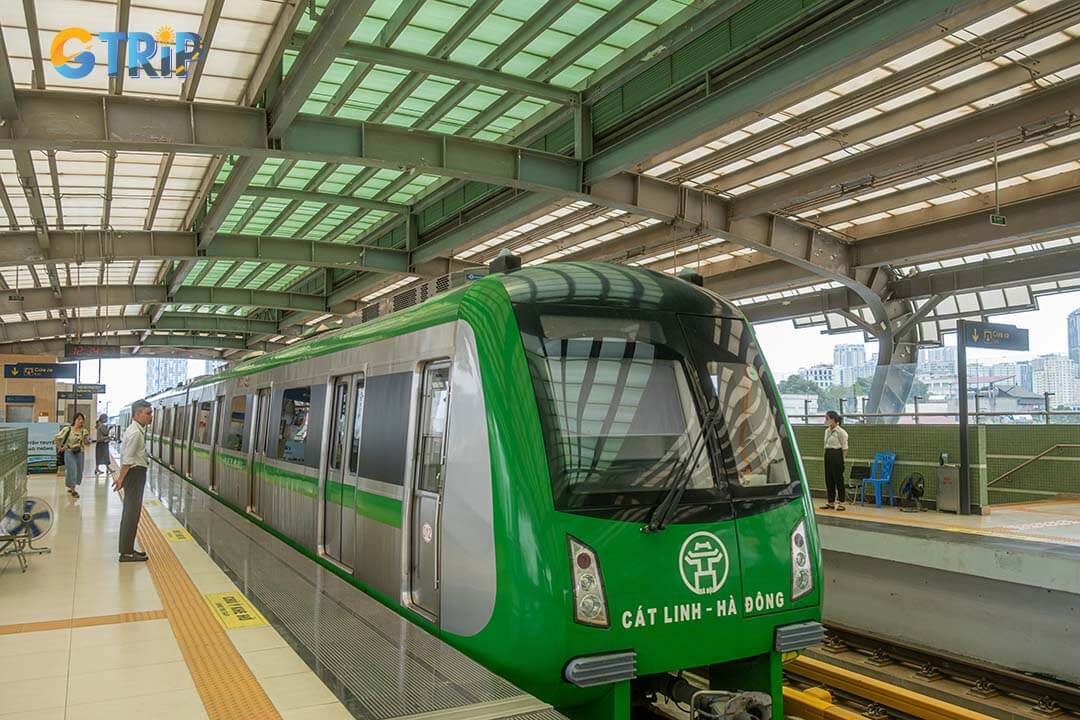
To reach Long Bien Bridge by subway, take Line 2A (Cat Linh - Ha Dong) to Cat Linh Station
By public bus
Using Hanoi's public bus system offers an economical and authentic local experience for reaching Long Bien Bridge, perfect for budget travelers and those wanting to experience everyday Vietnamese transportation.
Three main bus routes service the Long Bien Bridge area:
- Bus 01: Operates between Yen Nghia Bus Station and Gia Lam Bus Station, crossing directly over the bridge
- Bus 08A: Connects Dong My and Long Bien, with stops near both ends of the bridge
- Bus 143: Runs between Hanoi Railway Station and Dong My, with stops close to the bridge entrance
The bus fare is consistently affordable across all routes:
| Bus number | Route | Frequency | Operating hours | Fare |
|---|---|---|---|---|
| 01 | Long Bien - Gia Lam | Every 10-15 minutes | 5:00 AM - 9:00 PM | 7,000 VND ($0.30) |
| 08A | Dong My - Long Bien | Every 15-20 minutes | 5:00 AM - 9:00 PM | 7,000 VND ($0.30) |
| 143 | Hanoi Railway - Dong My | Every 15 minutes | 5:00 AM - 9:00 PM | 7,000 VND ($0.30) |
When taking the bus, be prepared for a few practicalities:
- Buses can get crowded during peak hours, so consider traveling during off-peak times
- Have small bills ready, as drivers typically don't provide change for large denominations
- Look for electronic boards or numbered signs at bus stops indicating route numbers
- Signal the driver when approaching your stop by pressing the bell button onboard
- The closest bus stops to the bridge are at Tran Nhat Duat Street (Hoan Kiem side) or near Long Bien Market (Long Bien side)
By motorbike or bicycle rental
Exploring Long Bien Bridge via motorbike or bicycle provides the most flexible and immersive experience. It allows visitors to enjoy the journey at their own pace and discover hidden viewpoints around the structure.
Motorbike rental options:
- Rental shops in Old Quarter: Numerous shops on Ma May, Hang Bac, and surrounding streets offer daily rentals
- App-based services: Platforms like Grab and Be allow short-term motorbike rentals through their apps
- Hotel services: Many accommodations can arrange motorbike rentals for guests
Bicycle rental options:
- Specialized bicycle shops: Dedicated rental stores like Hanoi Bicycle Collective offer quality bikes
- Tourist-oriented rentals: Several shops in the Old Quarter cater specifically to visitors
- Free/included bikes: Some hotels and hostels provide complimentary bicycle use for guests
Important information for visiting Long Bien Bridge:
- Access hours: The bridge is open 24/7 to pedestrians, cyclists, and motorbikes
- Train schedule: Trains still operate on the central track, so remain vigilant and stay on designated paths
- Cost: There is no entrance fee to access or cross the bridge
- Parking: Free motorcycle parking is available at both ends of the bridge
- Navigation: From the Old Quarter, head north on Tran Nhat Duat Street until reaching the bridge entrance
- Safety considerations: Traffic rules are loosely followed in Hanoi, wear helmets (mandatory for motorbikes) and exercise caution
When riding to the bridge, follow these directions from the Old Quarter:
- Head northeast along Hang Dao Street
- Continue onto Hang Duong Street
- Turn left onto Tran Nhat Duat Street
- Follow Tran Nhat Duat Street for approximately 1 kilometer until reaching the bridge entrance
Nearby attractions from Long Bien Bridge
Long Bien Bridge is more than just a historic landmark, it’s also a gateway to exploring some of Hanoi’s most vibrant neighborhoods. Traditional markets, street food stalls and modern shopping areas and cultural attractions, the surroundings offer a rich blend of old and new for visitors to enjoy.
Hanoi Old Quarter
Just a 15-20 minute walk southwest from Long Bien Bridge lies Hanoi's Old Quarter, the cultural and historical heart of Vietnam's capital. This ancient district, with its origins dating back to the 13th century, offers a fascinating labyrinth of narrow streets and alleys that preserve much of their original character despite centuries of change.
The Old Quarter is organized around its traditional "36 Streets", each historically named after the specific trade or guild that once dominated it. Despite modern changes, streets like Hang Bac, Hang Bo, and Hang Ma still specialize in traditional goods, blending old shophouses with modern cafés and boutiques.
Beyond shopping, the Old Quarter offers some of Hanoi's most authentic cultural experiences. The area houses numerous historical sites, including Bach Ma Temple (one of the oldest temples in Hanoi), Dong Xuan Market (the city's largest covered market), and the iconic Hoan Kiem Lake with its picturesque Ngoc Son Temple. Street food enthusiasts will find paradise in the Old Quarter's countless food stalls and small restaurants serving classic Hanoian dishes like pho, bun cha, and egg coffee.
Old Quarter highlights are within walking distance of Long Bien Bridge:
- Dong Xuan Market - Hanoi's largest indoor market, perfect for souvenirs and local goods
- Ta Hien Street - The famous "beer street" with vibrant nightlife
- Ma Mat Street - Well-preserved ancient architecture and boutique hotels
- St. Joseph's Cathedral - Hanoi's neo-gothic cathedral, built during French colonial rule
- Weekend night market - Stretching from Hang Dao Street to the edge of the Old Quarter (Friday to Sunday evenings)
- Bach Ma Temple - The oldest temple in the Old Quarter, dating back to the 11th century
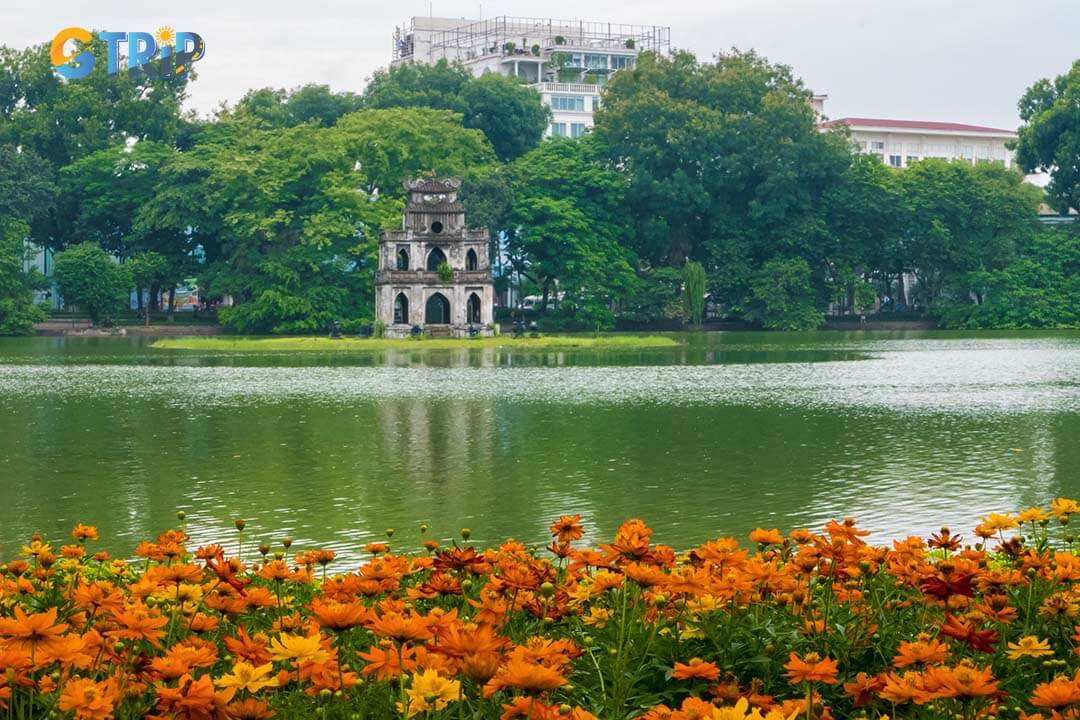
Hanoi's Old Quarter, a 15-20 minute walk southwest from Long Bien Bridge, is a historic area featuring narrow streets, local trades, cultural landmarks, and delicious food
Phuc Tan Riverbank Forest Park
Located along the Red River beneath Long Bien Bridge, Phuc Tan Riverbank Forest Park has transformed from a garbage dump into an ecological and artistic haven. This urban regeneration project has created a refreshing green space where visitors can experience a different side of Hanoi.
The park stretches approximately 500 meters along the riverbank and features an innovative blend of recycled art installations and carefully cultivated greenery. Local artists have repurposed discarded items like plastic bottles, tires, and metal scraps into creative sculptures and decorative elements, sending a powerful message about environmental conservation. Strolling through the park, you'll encounter whimsical artworks like colorful bottle gardens and metal fish sculptures amid the greenery.
What makes Phuc Tan particularly special is its community roots. The project involved residents in its creation, transforming the physical space and fostering community pride and environmental awareness. For visitors, it offers a peaceful retreat from Hanoi's bustling streets, with shaded pathways perfect for a stroll and scenic spots to photograph the Long Bien Bridge from below.
Best experiences at Phuc Tan Riverbank Forest Park:
- Admire the creative upcycled art installations made from reclaimed materials
- Capture unique photography angles of the Long Bien Bridge against the Red River backdrop
- Enjoy a peaceful morning walk among the native plants and trees
- Observe local community life as residents tend small vegetable gardens
- Watch the sunset over the Red River from one of the park's viewpoints
Mipec Long Bien
Standing in contrast to the historic ambiance of Long Bien Bridge, Mipec Long Bien offers a modern counterpoint just a short 10-minute walk away. This modern shopping center offers a cool, comfortable break for travelers after exploring the bridge in Hanoi’s heat.
Mipec Long Bien spans five floors of retail space, hosting a mix of international brands, local boutiques, and dining options that range from fast food to upscale restaurants. The complex also houses a modern supermarket on the lower level, perfect for picking up snacks or necessities for your continued travels. For families visiting with children, the indoor playground and entertainment center on the upper floors provide a welcome diversion.
Beyond shopping, Mipec Long Bien has become something of a meeting point for both locals and tourists in the area. Its food court offers affordable Vietnamese dishes alongside international cuisine, making it an excellent place to refuel before continuing your exploration. The complex also includes coffee shops with large windows, perfect for people-watching while enjoying Vietnam’s famous coffee.
Long Bien Market
Practically in the shadow of the bridge itself, Long Bien Market offers one of Hanoi's most authentic local experiences. Hanoi’s largest wholesale market comes alive at dawn, offering a vibrant glimpse into the city's daily rhythms that most tourists miss.
The market comes alive around midnight when trucks and motorbikes laden with fresh produce begin arriving from surrounding agricultural regions. By 3:00 AM, the market is bustling as vendors display colorful fruits and vegetables, while buyers haggle for daily supplies. The atmosphere is electric, a symphony of voices bargaining, motorbikes weaving between stalls, and porters transporting goods on traditional carrying poles.
Visiting Long Bien Market provides a rare glimpse into the food supply chain that sustains this city of over 8 million people. The market is divided into loosely organized sections, with different areas specializing in specific produce types. The fruit section is particularly impressive, offering everything from local specialties to imported varieties. Unlike tourist-oriented markets, prices here reflect true wholesale rates with minimal markup.
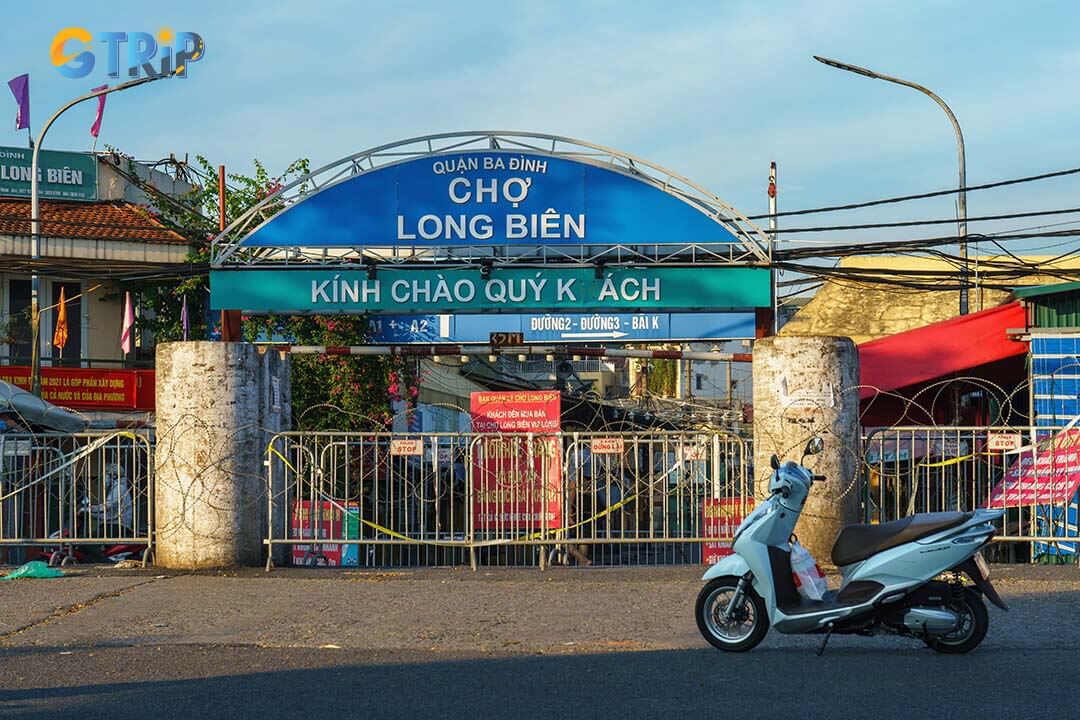
Long Bien Market is Hanoi's largest wholesale market, offering an authentic, bustling experience with fresh produce arriving at dawn and vendors haggling for daily supplies
Essential tips for visitors to Long Bien Bridge
Visiting Long Bien Bridge offers a rare glimpse into Hanoi’s history, but it’s not your typical tourist site. Here’s a quick guide to help you stay safe and enjoy your experience.
- Wear proper shoes: The 1.7-km bridge features wooden planks, metal surfaces, and uneven concrete. Wear sturdy shoes with a good grip, flip-flops or dress shoes aren’t ideal.
- Stick to the walkway: Always walk on the wooden pedestrian path. Avoid the railway and motorbike lanes, and stay alert for uneven boards or damaged railings.
- Watch for traffic: Expect frequent trains, motorcycles, and bicycles. Step aside when needed, especially during rush hours (7-9 AM, 5-7 PM). The bridge vibrates during train crossings, this is normal.
- Best time to visit: Morning (5:30-7 AM) or late afternoon (4-5:30 PM) offers the best light for photos and a safer walking experience. Avoid late-night visits due to poor lighting.
- Weather matters: Check the forecast. In summer, heat and sun exposure can be intense; during the rainy season, the surface gets slippery. Bring water, sun protection, and dress for the climate.
Exploring Long Bien Bridge reveals Hanoi’s history and resilience, set against stunning views of the Red River. Your journey here is not merely a wander across steel and wood, it’s an encounter with the spirit of a city that stands tall through its trials. Admiring this iconic bridge offers more than photos, it brings lasting memories and authentic experiences. This exploration undoubtedly feeds the wanderlust for more undiscovered gems. If you're hungry for more insights on hidden treasures or travel tips, remember that GTrip is just around the corner to guide your explorations.

